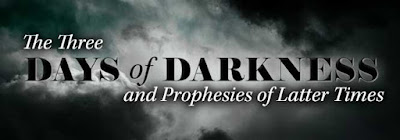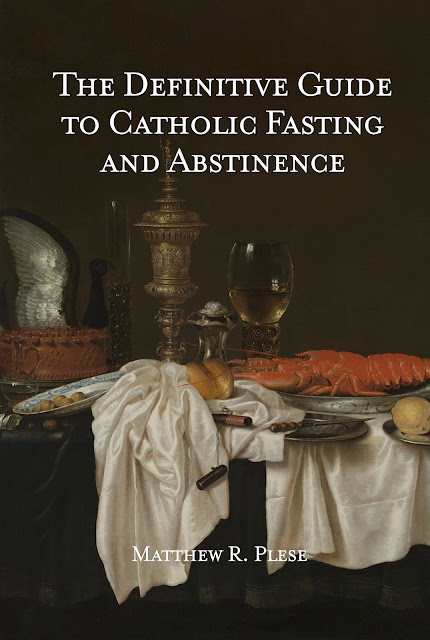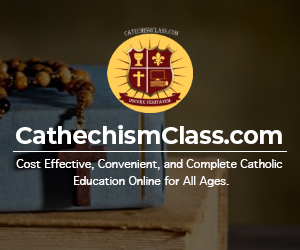Martinmas - The Advent Equivalent of Mardi Gras
When November 11th arrives each year, we are accustomed to seeing civic displays of patriotism and honor for the nation's veterans. Originally known as Armistice Day, in honor of the ending of World War I, which concluded on the 11th hour of the 11th day of the 11th month, the United States in 1954 amended the holiday to include a remembrance of all the living and the dead of the nation's veterans. And the name was subsequently changed to Veteran's Day on June 1, 1954.
However, to the Catholic, November 11th is more than a day to honor the nation's veterans and even more than a day to pray for the repose of the souls of all who have died in battle for the country's defense. November 11th is the Feast of St. Martin of Tours, the great worker of charity who is said to have raised three persons from the dead. Known as Martinmas, this day of celebration featured numerous festivities in honor of the life and charity of St. Martin of Tours, and it is still observed by some Catholics who keep the tradition alive of carrying lanterns and eating a traditional meal of goose on this day. Note: No goose allowed, of course, on years when November 11 falls on a Friday.
In fact, Father Francis Weiser, in the Handbook of Christian Feasts and Customs, shows that Martinmas was the Thanksgiving Day of the Middle Ages. This is not a day we should forget:
The most common, and almost universal, harvest and thanksgiving celebration in medieval times was held on the Feast of Saint Martin of Tours (Martinmas) on November 11. It was a holiday in Germany, France, Holland, England and in central Europe. People first went to Mass and observed the rest of the day with games, dances, parades, and a festive dinner, the main feature of the meal being the traditional roast goose (Martin's goose). With the goose dinner they drank "Saint Martin's wine," which was the first lot of wine made from the grapes of the recent harvest. Martinmas was the festival commemorating filled barns and stocked larders, the actual Thanksgiving Day of the Middle Ages. Even today it is still kept in rural sections of Europe, and dinner on Martin's Day would be unthinkable without the golden brown, luscious Martin's goose.
But St. Martin's Day was more than just Thanksgiving as it also served as the "Mardi Gras" of Advent by ushering in the pre-Christmas fasting period known as St. Martin's Lent. St. Martin's Lent, a fasting period leading up to Christmas, originated as early as 480 AD. Dom Guéranger, in his unmatched, prodigious Liturgical Year, writes:
The oldest document in which we find the length and exercises of Advent mentioned with anything like clearness, is a passage in the second book of the History of the Franks by St. Gregory of Tours, where he says that St. Perpetuus, one of his predecessors, who held that see about the year 480, had decreed a fast three times a week, from the feast of St. Martin until Christmas…. Let us, however, note this interval of forty, or rather of forty-three days, so expressly mentioned, and consecrated to penance, as though it were a second Lent, though less strict and severe than that which precedes Easter. Later on, we find the ninth canon of the first Council of Mâcon, held in 582, ordaining that during the same interval between St. Martin’s day and Christmas, the Mondays, Wednesdays, and Fridays, should be fasting days, and that the Sacrifice should be celebrated according to the lenten rite. Not many years before that, namely in 567, the second Council of Tours had enjoined the monks to fast from the beginning of December till Christmas. This practice of penance soon extended to the whole forty days, even for the laity: and it was commonly called St. Martin’s Lent….There were even special rejoicings made on St. Martin’s feast, just as we see them practised now at the approach of Lent and Easter. The obligation of observing this Lent, which, though introduced so imperceptibly, had by degrees acquired the force of a sacred law, began to be relaxed, and the forty days from St. Martin’s day to Christmas were reduced to four weeks.
The History of the Advent Fast
The Catechism of the Liturgy describes the fast leading up to Christmas: “In a passage of St. Gregory of Tours’ History of the Franks, we find that St. Perpetuus, one of his predecessors in the See, had decreed in 480 AD that the faithful should fast three times a week from the feast of St. Martin (November 11th) [up] to Christmas… This period was called St. Martin’s Lent, and his feast was kept with the same kind of rejoicing as Carnival.” In historical records, Advent was originally called Quadragesima Sancti Martini (Forty Days Fast of St. Martin). Sacramentarium Ecclesiæ Catholicæ published in 1857, states how it was practiced strictly by those under vows since Regulars refer to religious who take vows:
About the end of the sixth century John the Faster, Patriarch of Constantinople, enforces daily abstinence from flesh during the forty days that precede the Nativity. Chrodegand, Bishop of Metz, A.D. 742 enjoins upon Regulars, daily abstinence and fast til the ninth hour from S. Martin's Day to the Nativity.
The Catechism of the Liturgy notes that this observance of fasting in some form likely lasted until the 12th century. Turning to the Catechism of Perseverance by Monsignor Gaume from 1882, we read the following historical account of the Advent fast taking the form of a fast on Mondays, Wednesdays, and Fridays from St. Martin's Day until Christmas:
The institution of Advent would seem as old as that of the festival of Christmas, though the discipline of the Church on this point has not been always the same. For several centuries, Advent consisted of forty days, like Lent: it began on St. Martin's Day. Faithful to the old customs, the Church of Milan kept the six weeks of the primitive Advent, which had been adopted by the Church of Spain. At an early period the Church of Rome reduced the time to four weeks, that is, to four Sundays, with the part of the week remaining before Christmas. All the West followed this example.
Formerly, a fast was observed throughout Advent. In some countries this fast was of precept for every one; in others, of simple devotion. The obligation of fasting is attributed to St. Gregory the Great, who had not, however, the intention of making it a general law. In the middle of the fifth century - 462 - St. Perpetuus, Bishop of Tours, commanded that there should be three fastdays weekly in his diocese from the festival of St. Martin to Christmas. This rule became general in the Church of France til the seventh century, after the holding of the Council of Macon in 581. The holy assembly prescribed that a fast should be observed on the Monday, Wednesday, and Friday of each week, from the feria or festival of St. Martin to the Nativity of our Lord; and that the offices, especially the sacrifice of the Mass, should then be celebrated as in Lent. The use of flesh-meat was forbidden every day during Advent.
The same abstinence was observed in other Catholic regions as a pious donation proves for us. In 753, Astolphus, King of the Lombards, having granted the waters of Nonantula to an abbey of the same name, reserved forty pike to furnish his own table during St. Martin's Lent. We may infer that, in the eighth century, the Lombards observed the fast during the forty days before Christmas, or at least abstained from flesh meat.
By the 1100s, the fast had begun to be replaced by simple abstinence. As stated in Sacramentarium Ecclesiæ Catholicæ:
"Peter the Venerable, the ninth Abbat of Cluny, A.D. 1123, says, 'Since a more than ordinary abstinence is kept by nearly the whole Church on these days, in order to prepare for the Nativity of the Lord, let us consecrate these hallowed days with moderate fasts, which many others consecrate with greater fasts.'
The writer continues:
Although the period is forty days, there never were anywhere actually forty fast days, because fasting was prohibited on Sabbaths, except at Rome, and everywhere on Lord's Days. There could therefore be only twenty-eight, twenty-nine or third fast days within the period. And as the Roman Church allowed fasting on Sabbaths, the period was shortened by five or six days, according to the number of Sabbaths...
Some severe monastic orders, e.g. the friars minors, did actually observe forty fast days, and so began this Lent after the Octave of All Saints, which allows forty fast days exclusive of Sabbaths and Lord's Days...
Similarly, Rev. Antonine Villien mentions the decline of the Advent Fast in "A History of the Commandments of the Church":
Thus even before reaching full vogue, the Advent fast was on the decline. At the end of the twelfth century it was nearly abolished. The Council of Avranches AD 1172 made not only fasting but even abstinence in Advent a matter of simple counsel especially addressed to clerics and soldiers. In Rome, the observance still existed but in Portugal, it was not known whether it carried with it any obligation for the Archbishop of Braga questioned Pope Innocent III on this point and the Pope, instead of insisting that there is an obligation, simply states that in Rome the fast is observed. No very clear information is to be obtained from Durand de Mende if an Advent fast existed at his time. Durand does not speak of the way it was observed. In England, it was obligatory only for monks like the daily fast imposed by the Council of Tours for the month of December up to Christmas.
As indicated, in 1281, the Council of Salisbury held that only monks were expected to keep the fast; however, in a revival of the older practice, in 1362, Pope Urban V required abstinence for all members of the papal court during Advent. Yet this, too, did not last long. By the time of St. Charles Borromeo in the 16th century, the saint urged the faithful under his charge in Milan to observe fasting and abstinence on Mondays, Wednesdays, and Fridays of Advent. Dom Guéranger similarly testifies to this in The Liturgical Year:
The discipline of the Churches of the west after having reduced the time of the Advent fast so far relented in a few years as to change the fast into a simple abstinence and we even find Councils of the twelfth century, for instance Selingstadt in 1122 and Avranches in 1172, which seem to require only the clergy to observe this abstinence. The Council of Salisbury held in 1281 would seem to expect none but monks to keep it. On the other hand for the whole subject is very confused owing no doubt to there never having been any uniformity of discipline regarding it in the western Church we find Pope Innocent III in his letter to the bishop of Braga mentioning the custom of fasting during the whole of Advent as being at that time observed in Rome, and Durandus in the same thirteenth century in his Rational on the Divine Offices tells us that in France fasting was uninterruptedly observed during the whole of that holy time.
This much is certain that by degrees the custom of fasting so far fell into disuse that when in 1362 Pope Urban V endeavoured to prevent the total decay of the Advent penance all he insisted upon was that all the clerics of his court should keep abstinence during Advent without in any way including others either clergy orlaity in this law.
St. Charles Borromeo also strove to bring back his people of Milan to the spirit if not to the letter of ancient times. In his fourth Council, he enjoins the parish priests to exhort the faithful to go to Communion on the Sundays at least of Lent and Advent and afterwards addressed to the faithful themselves a pastoral letter in which, after having reminded them of the dispositions wherewith they ought to spend this holy time, he strongly urges them to fast on the Mondays, Wednesdays, and Fridays at least of each week in Advent.
Even closer to our modern times, remnants of St. Martin's Lent remained in the Roman Rite through the 19th century when Wednesday and Friday fasting in Advent continued to be mandated in some countries. In the United States, fasting was kept on the Wednesdays and Fridays of Advent, as was the Universal practice of the Church, until 1840 when the fast on Wednesdays in Advent was abrogated for Americans. The fast on Fridays in Advent was abrogated in 1917 in America and abroad with the promulgation of the 1917 Code of Canon Law.
The Code similarly removed the Wednesdays of Advent for any localities that continued to mandate them, as well as the Saturdays of Advent, which were kept elsewhere, such as in Italy, as evident by a 1906 decree which mandated the fast. Father Villien comments, "This discipline, which at the present day is observed by Italy alone among the nations of the West, is the last vestige of a very ancient fast, the fast of Advent."
But even the attempts to maintain elements of the Advent fast from the 17th through the 20th centuries were shadows of St. Martin's Lent. In fact, the Church still encouraged people to keep the venerable discipline of St. Martin's Lent, even if it was not obligatory under pain of sin. This fact is expressed with conviction in the Catechism of Perseverance:
The Church neglects no means of revisiting in her children the fervour of their ancestors. Is it not just? Is the little Babe whom we expect less beautiful, less holy, less worthy of our love now than formerly? Has He ceased to be the Friend of pure hearts? Is His coming into our souls less needed? Alas! perhaps we have raised there all the idols that, eighteen centuries ago, He came to overturn. Let us therefore be more wise. Let us enter into the views of the Church: let us consider how this tender mother redoubles her solicitude to form in us those dispositions of penance and charity which are necessary for a proper reception of the Babe of Bethlehem.
On this point, Father Villien concurs:
But it is only with regret that the Church permits her institutions to disappear. She wishes to retain at least a vestige of them as a witness to a former stage of devellopment. This is what she has done for Italy by the decree of September 7, 1906.
The West Has Forgotten Its Advent Fast
The Advent fast, long observed in anticipation of our Lord's birth, had ceased, although the fast of the Advent Ember Days, the Vigil of the Immaculate Conception, and Christmas Eve remained. Yet by the time of Vatican II, even these venerable fasts were also removed. Despite being one of the holiest days in the year, Christmas had ceased to be prepared for with a fast of any kind. And soon after, the secular world insisting on materialism turned Advent into Christmastide. Christmas parties, gift exchanges, and consumer splurging have all taken place during the time that our forefathers were diligently preparing for the Redeemer's birth by observing a fast. How far we have fallen from the times of St. Martin.
St. Martin's Lent or St. Philips?
The observance of a period of fasting up to Christmas Day is not only observed by the Western Church. This practice is observed in the Eastern Rites as well. Greek Catholics, for instance, observe this period known to them as St. Philip's Lent. Dom Guéranger writes of this practice in his 1910 volume on Advent:
The Greek Church still continues to observe the fast of Advent though with much less rigour than that of Lent. It consists of forty days beginning with November 14, the day on which this Church keeps the feast of the apostle St Philip. During this entire period the people abstain from flesh meat, butter, milk, and eggs, but they are allowed which they are not during Lent, fish oil and wine. Fasting, in its strict sense, is binding only on seven out of the forty days and the whole period goes under the name of St. Philip's Lent. The Greeks justify these relaxations by this distinction that the Lent before Christmas is so they say only an institution of the monks, whereas the Lent before Easter is of apostolic institution.
In an article on the Traditional Byzantine Rite Fast and Abstinence written by Fr. R. Janin in 1922, "Christmas Lent" is described as "the 40 days before Christmas. The same restrictions as for Great Lent but oil and fish are permitted except on Wednesdays and Fridays." Thus, the Nativity Fast of Advent forbids food cooked with fat, eggs, milk products, and wine - with oil and fish are also forbidden only on Wednesdays and Fridays. Recently, a distinction was made for the observance of the fast from November 15 to December 12 compared to December 13 to Christmas Eve. In either case, the Nativity Fast - known in the East as St. Philip's Fast - more closely resembles St. Martin's Lent than the West's Advent season does.
Rediscover the True Spirit of Advent
Above all, this time of year, as we approach Advent and await the celebration of the Nativity of Christ, let us embrace some fasting. Fasting on Wednesdays and Fridays during this time is preferable to not fasting at all. But this mitigated fast is a remnant of the true Advent fast. Strive to keep at least Mondays, Wednesdays, and Fridays from St. Martin's Day as days of fast. And, should you wish to do more, keep all forty days as days of fast. Indeed, as St. Frances de Sales noted: "If you’re able to fast, you will do well to observe some days beyond what is ordered by the Church." Tuesdays, Thursdays, and Saturdays would be appropriate to observe as days of abstinence without fasting. As a result, I suggest, as a minimum, the following schedule for St. Martin's Lent based on the Church's venerable tradition:
- Fasting and Abstinence: Monday, Wednesday, and Friday
- Abstinence-only: Tuesday, Thursday, and Saturday
- No discipline on Sunday
Want to learn more about the history of fasting and abstinence? Check out the Definitive Guide to Catholic Fasting and Abstinence.
































